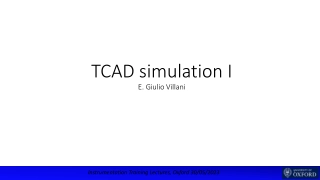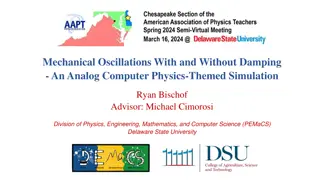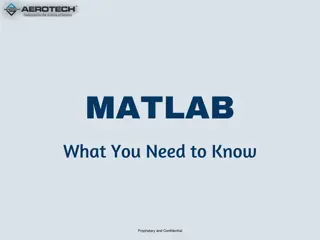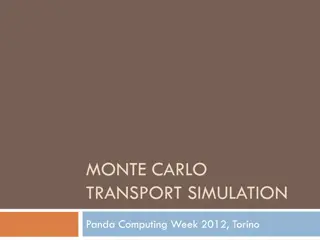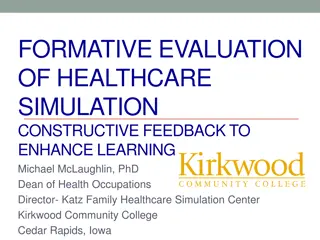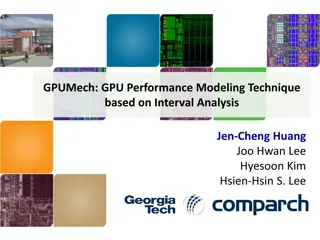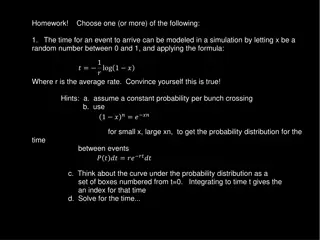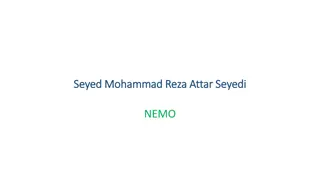Understanding Computer Simulation and Modeling Tools
Computer simulation and modeling is essential for conducting studies in various fields. Selecting the right simulation language or package is crucial for accurate results. This involves considering the characteristics of the language, such as random number generation, process transformers, list processing capability, statistical analysis routines, report generation, and timing mechanisms. There are numerous simulation software tools available, with some being academia-supported, open-source, or commercial offerings. Understanding the options is key to choosing the most suitable tool for your simulation study.
Download Presentation

Please find below an Image/Link to download the presentation.
The content on the website is provided AS IS for your information and personal use only. It may not be sold, licensed, or shared on other websites without obtaining consent from the author. Download presentation by click this link. If you encounter any issues during the download, it is possible that the publisher has removed the file from their server.
E N D
Presentation Transcript
Lecture 5 Computer Simulation Prof. Dr.Abbas H. Hassin Alasadi abbashh2002@gmail.com
Simulation and Modeling Languages In conducting a simulation modeling study one or more software tool is needed. There are many (87+) packages available for DES alone. Selecting the appropriate language or package for your study can be a study of its own. In simulation and modeling selecting the appropriate language or package can be difficult. Nance (1993) and (1995) identified the six characteristics of a discrete event simulation language. He proposed that discrete event simulation programming languages (SPL s) must meet a minimum of six requirements: 2
Characteristics of simulation language. generation of random numbers to represent uncertainty, process transformers, to permit other than uniform random varieties to be used, list processing capability, so that objects can be created, manipulated, and deleted, statistical analysis routines, to provide the descriptive summary of model behavior, report generation, to provide the presentation of potentially large reams of data in an effective way for decision making, and a timing executive or time flow mechanism. 3
Simulation Software Simulation Software used several sources: Simulation Reloaded by Swain. Modeling & Simulation Resources website by Arsham A Collection of Modeling and Simulation Resources on the Internet website by Rizzoli The McLeod Institute of Simulation Sciences at California State University, Chico; Simulation Software for the Classroom, Simulation Education, Society for Computer Simulation International a general Internet search 4
Simulation Software There are 87 discrete event simulation and modeling tools (SMT s) which included SPL s and simulation application packages (SAP s) currently available. Of these five (5) are not currently available (AWESIM, KAMELEON, MODSIM III, Silk, and Visual SLAM). Thirty-three (33) are either academia supported or open source supported. The remaining 49 are commercial offerings. Three (3) of the commercial offerings (Arena, Extend, and SIGMA) have academic versions used for teaching simulation courses. 5
Simulation Software There are 87 discrete event simulation and modeling tools (SMT s) which included SPL s and simulation application packages (SAP s) currently available. Of these five (5) are not currently available (AWESIM, KAMELEON, MODSIM III, Silk, and Visual SLAM). Thirty-three (33) are either academia supported or open source supported. The remaining 49 are commercial offerings. Three (3) of the commercial offerings (Arena, Extend, and SIGMA) have academic versions used for teaching simulation courses. 6
Simulation Software The End of Lecture 5 7


